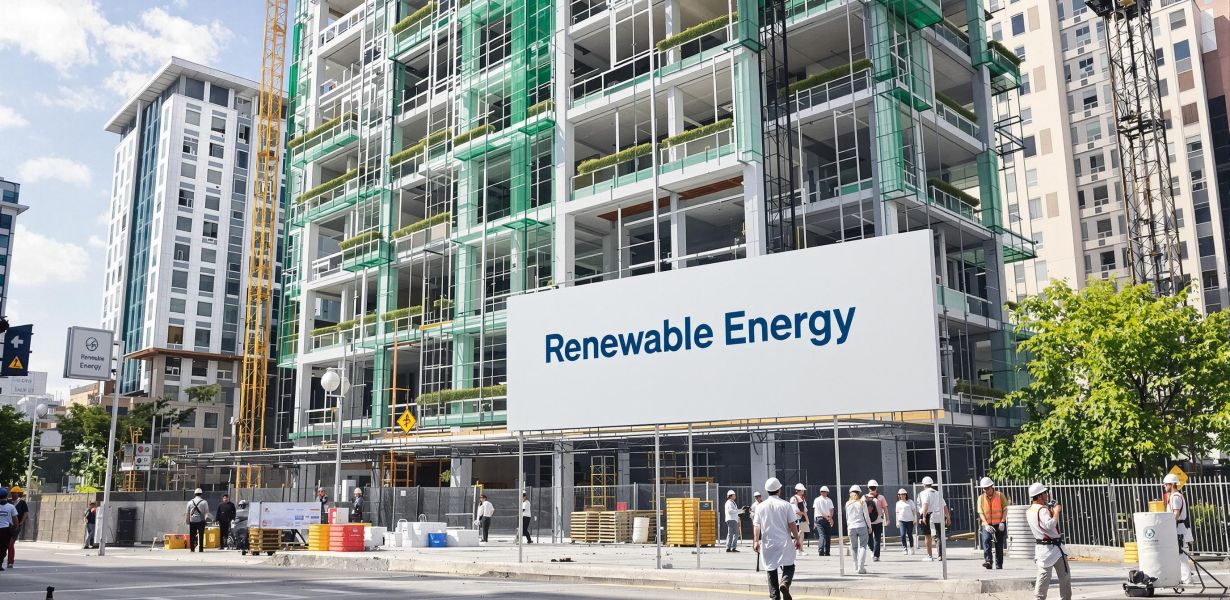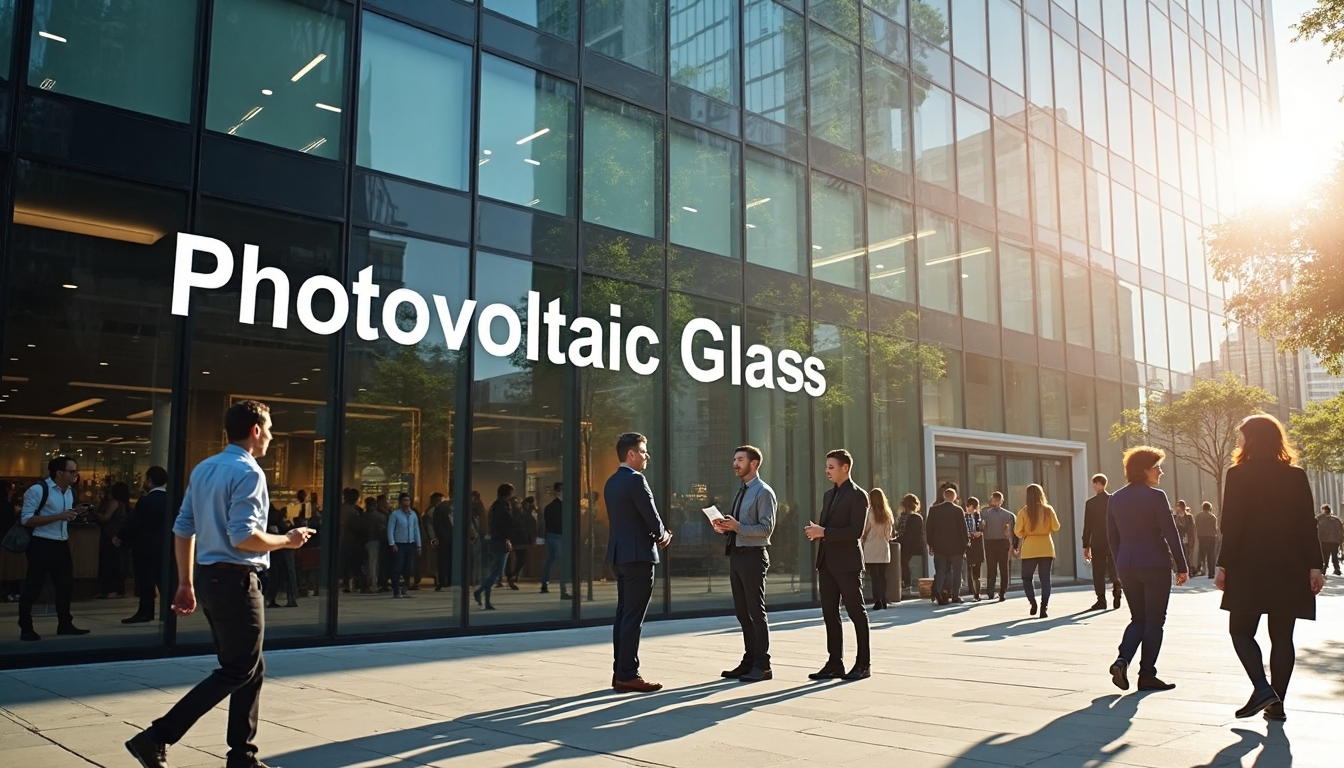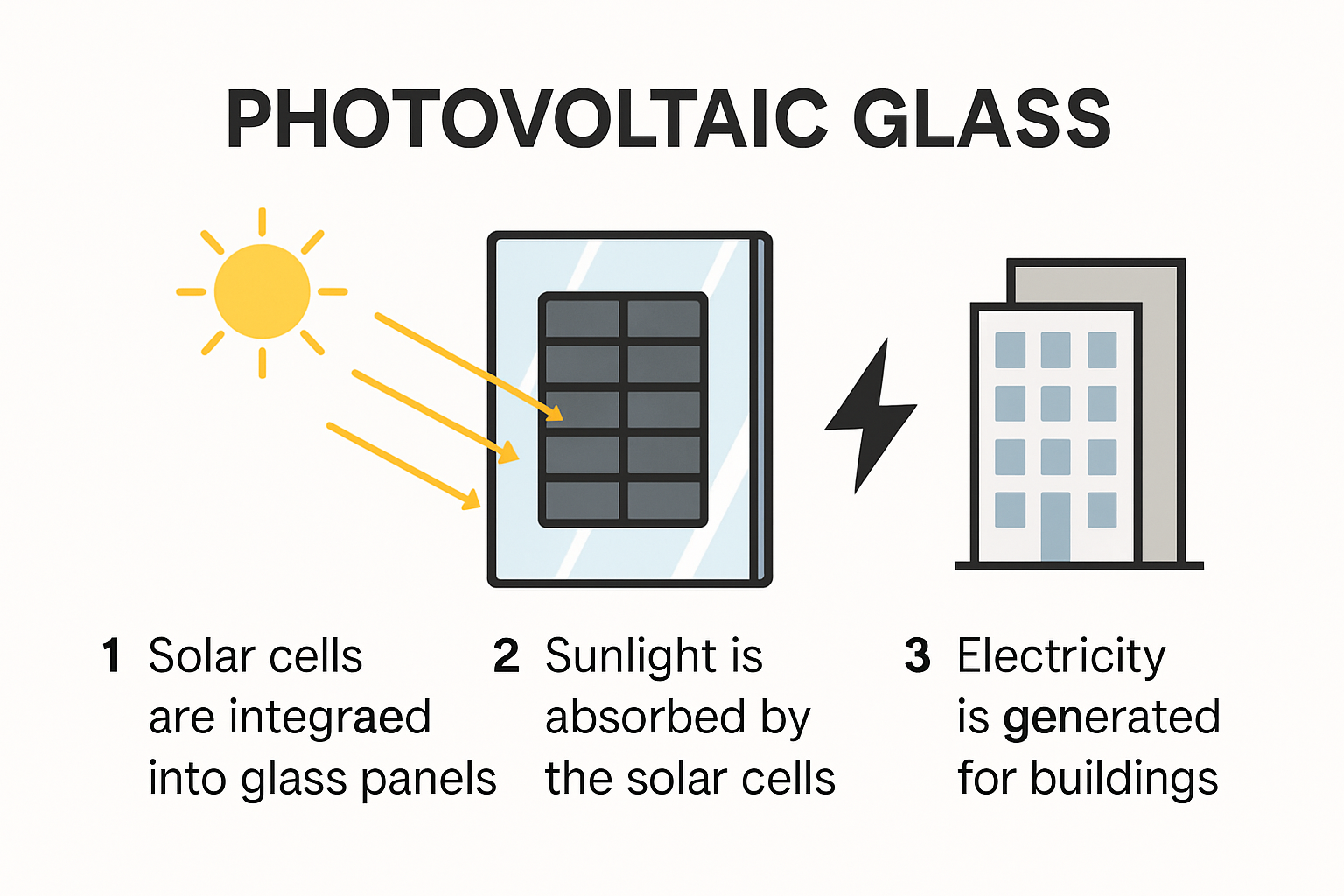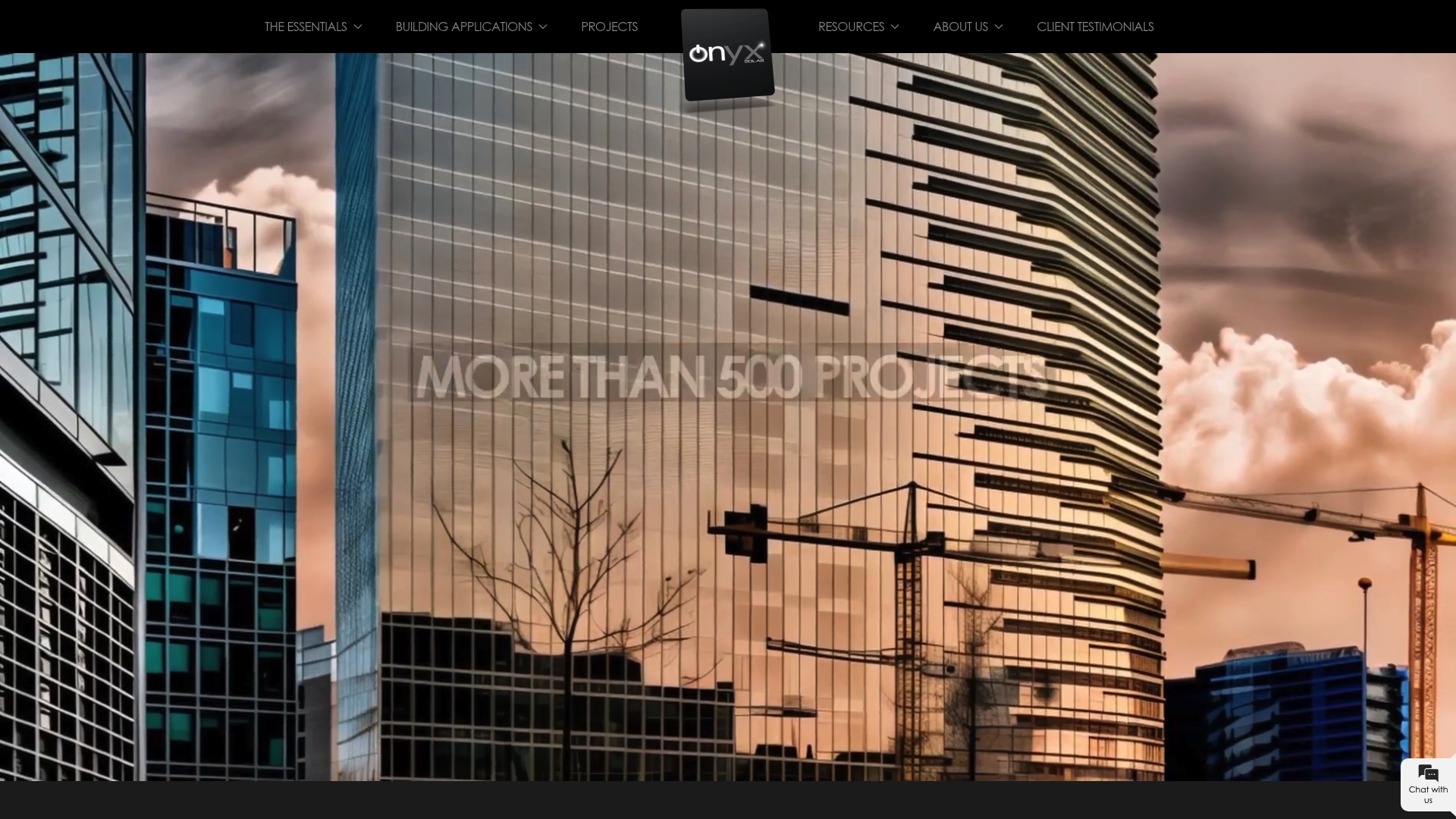
July 15, 2025
Onyx Solar USA
79 Madison Avenue, Ste. #231
New York, NY 10016
usa@onyxsolar.com
+1 917 261 4783
Onyx Solar Spain
Calle Río Cea 1, 46,
05004 Ávila. Spain.
info@onyxsolar.com
+34 920 21 00 50

Photovoltaic glass is turning entire buildings into power plants, generating electricity through their own windows and facades. Here is the kicker. Switching to photovoltaic windows can cut building energy use and CO₂ emissions by up to 40% compared to standard glass. Most people think solar panels only belong on rooftops, but this glass is hiding energy tech right in plain sight.
| Takeaway | Explanation |
|---|---|
| Integration of Photovoltaic Glass | Photovoltaic glass integrates solar cell technology within building materials, allowing surfaces to generate electricity while maintaining traditional architectural functions. |
| Significant Energy and Cost Savings | Implementing photovoltaic windows can reduce energy consumption and CO₂ emissions by up to 40%, leading to substantial economic benefits for buildings. |
| Advanced Thermal Performance | Photovoltaic glass provides exceptional thermal insulation, achieving energy savings of approximately 70.68% for cooling and 23.53% for heating compared to regular glass. |
| Design Flexibility | Unlike traditional solar panels, photovoltaic glass can be incorporated into various architectural elements, allowing for aesthetic integrity alongside energy generation. |
| Future Innovations in Materials | Emerging technologies in photovoltaic glass, such as perovskite solar cells and transparent solar materials, promise higher efficiency and adaptability in architectural designs. |
Photovoltaic glass transforms architectural surfaces into active energy generators by integrating solar cell technology directly into building materials. Unlike traditional solar panels, this innovative technology seamlessly converts sunlight into electricity while maintaining the fundamental architectural functions of glass surfaces.

At its core, photovoltaic glass operates through a sophisticated process of semiconductor technology. Thin layers of photovoltaic materials like crystalline or amorphous silicon are embedded within glass panels. When sunlight strikes these semiconductor layers, photons interact with the material’s electrons, generating an electric current. Learn more about our advanced solar glass technologies.
The Applied Energy study revealed breakthrough advancements in this technology, demonstrating how modern photovoltaic windows can achieve power conversion efficiencies up to 17.5% while maintaining significant visible light transmittance. This means buildings can generate electricity without compromising natural lighting or aesthetic design.
Modern photovoltaic glass is engineered to maximize energy performance across diverse architectural applications. Research from One Earth demonstrated that strategically implemented PV windows can reduce energy consumption and CO₂ emissions by up to 40% in highly glazed buildings.
The performance of photovoltaic glass depends on multiple factors including solar cell composition, glass transparency, thermal properties, and architectural placement. Cutting-edge designs now incorporate advanced materials like perovskite solar cells and specialized hydrogel layers to enhance energy generation and thermal regulation.
Engineers and architects can select from various photovoltaic glass configurations tailored to specific building requirements. Some designs prioritize maximum energy generation, while others balance electricity production with aesthetic considerations and natural lighting needs. The Hong Kong Polytechnic University research highlighted innovative approaches like solar photovoltaic integrated vacuum glazing, which simultaneously improves thermal insulation and energy generation.
By transforming traditional passive building surfaces into active energy-producing elements, photovoltaic glass represents a revolutionary approach to sustainable architecture. As building design continues to evolve, these intelligent glass systems will play a crucial role in creating more energy-efficient, environmentally responsible structures that generate clean electricity while maintaining aesthetic and functional excellence.
Photovoltaic glass represents a transformative solution for sustainable architecture, offering multifaceted benefits that extend far beyond traditional building materials. By integrating solar energy generation directly into architectural surfaces, these intelligent glass systems provide architects and developers with powerful tools for creating high-performance, environmentally responsible structures. Explore our advanced façade solutions that demonstrate the potential of this innovative technology.
The economic benefits of photovoltaic glass are substantial and multidimensional. According to research from One Earth, strategic implementation of PV windows can reduce energy consumption and CO₂ emissions by up to 40% in highly glazed buildings. This dramatic reduction translates directly into significant cost savings and improved building performance.
Studies from the Hong Kong Polytechnic University highlight that advanced photovoltaic glass technologies like solar photovoltaic integrated vacuum glazing can simultaneously generate electricity and improve thermal insulation. The MDPI research further revealed that photovoltaic double-skin façades can achieve a 30.4% reduction in heat gain and a 50.3% reduction in heat loss compared to traditional semi-transparent systems.
Beyond energy generation, photovoltaic glass delivers exceptional thermal management capabilities. Research from Can Tho University demonstrated that heat insulation solar glass can achieve remarkable energy-saving efficiencies of approximately 70.68% for cooling and 23.53% for heating compared to ordinary glass. These performance metrics underscore the potential of photovoltaic glass to dramatically reduce a building’s environmental footprint.

Here’s a table summarizing the thermal and energy performance metrics of photovoltaic glass versus traditional glass, as reported in the article:
| Performance Metric | Photovoltaic Glass | Traditional Glass |
|---|---|---|
| Cooling Energy Savings | 70.68% | – |
| Heating Energy Savings | 23.53% | – |
| Heat Gain Reduction (Double-Skin Façade) | 30.4% | – |
| Heat Loss Reduction (Double-Skin Façade) | 50.3% | – |
| CO₂ Emissions/Energy Use Reduction | Up to 40% | – |
The environmental benefits extend beyond immediate energy savings. By converting building surfaces into active energy-producing elements, photovoltaic glass helps reduce reliance on fossil fuel-based electricity generation. This approach supports global decarbonization efforts and helps buildings transition toward net-zero energy standards.
Photovoltaic glass also offers unparalleled design flexibility. Unlike traditional solar panels, these intelligent glass systems can be seamlessly integrated into various architectural elements including windows, façades, skylights, and curtain walls. This versatility allows architects to maintain aesthetic integrity while simultaneously generating clean, renewable energy.
As sustainability becomes increasingly critical in architectural design, photovoltaic glass emerges as a key technology for creating high-performance, environmentally responsible buildings. By transforming passive surfaces into active energy generators, these innovative systems represent a significant leap forward in sustainable construction technologies.
Photovoltaic glass represents a revolutionary design tool for architects and urban planners seeking to create sustainable, energy-efficient built environments. By transforming traditional building surfaces into active energy generators, this technology offers unprecedented opportunities for reimagining architectural aesthetics and urban infrastructure. Learn more about our innovative architectural solutions.
The Architectural Photovoltaic Application (APA) research emphasizes a critical paradigm shift: treating photovoltaic systems not as external add-ons, but as integral building services incorporated during initial design processes. This approach demands a holistic perspective where energy generation becomes a fundamental design consideration.
According to research published in MDPI, successful PV integration requires products that simultaneously serve energy generation and aesthetic purposes. Architects now have access to customizable photovoltaic glass modules that can be tailored to complement diverse architectural styles, from minimalist urban developments to complex institutional designs.
Urban planners can leverage photovoltaic glass to address multiple sustainability challenges simultaneously. The One Earth study revealed that strategic implementation of PV windows can reduce energy consumption and CO₂ emissions by up to 40% in highly glazed buildings, presenting a compelling solution for dense urban environments.
Photovoltaic glass applications span multiple architectural elements including:
To help visualize the different ways photovoltaic glass can be used in buildings, here’s a table summarizing its main architectural applications:
| Building Element | Photovoltaic Glass Application | Benefit |
|---|---|---|
| Façades | Energy-generating exteriors | Reduces energy use, adds insulation |
| Skylights | Overhead glazing with solar energy production | Generates energy, maintains light |
| Curtain Walls | Full building surface integration | Maximizes power output |
| Window Systems | Replaces traditional glass with PV glass | Supports net-zero designs |
The versatility of photovoltaic glass allows architects to design buildings that are not just energy-neutral, but energy-positive. Urban planners can now conceptualize entire districts where buildings actively contribute to the local energy grid, reducing dependence on centralized power infrastructure.
Beyond energy generation, these intelligent glass systems offer enhanced thermal performance, sound insulation, and aesthetic flexibility. Architects can now select photovoltaic glass configurations that balance energy production, visual transparency, and design aesthetics, creating buildings that are both functionally superior and visually compelling.
As cities worldwide commit to ambitious carbon reduction targets, photovoltaic glass emerges as a critical technology for sustainable urban development. By reimagining building surfaces as active energy generators, architects and urban planners can play a pivotal role in creating more resilient, efficient, and environmentally responsible urban landscapes.
The future of photovoltaic glass technology is poised for remarkable transformation, driven by rapid advancements in materials science, engineering, and sustainable design. Emerging technologies are pushing the boundaries of energy generation, efficiency, and architectural integration, promising a new era of intelligent building materials. Explore our cutting-edge architectural innovations.
Cutting-edge research is revolutionizing photovoltaic glass through sophisticated material innovations. MDPI research highlights significant breakthroughs in thin-film photovoltaic technologies, with cadmium telluride (CdTe) and copper indium gallium selenide (CIGS) achieving remarkable laboratory efficiencies of 22.10% and 23.35% respectively.
Particularly promising are perovskite solar cell technologies. Financial Times reports that Japan is investing $1.5 billion in commercializing ultra-thin, flexible perovskite solar cells, with ambitious goals of generating energy equivalent to 20 nuclear power plants by 2040. These developments signal a transformative potential for photovoltaic glass in global energy systems.
The photovoltaic industry is experiencing a critical evolution in material optimization and scalability. Research from the Royal Society of Chemistry projects that the industry will require approximately 89 million metric tons of glass annually to support 3.4 terawatts of photovoltaic production. A key trend is the movement towards thinner glass substrates, with manufacturers targeting 2 mm thickness to reduce material consumption and environmental impact.
Emerging trends in photovoltaic glass technology include:
These innovations are not merely technological improvements but represent a fundamental reimagining of building materials. Photovoltaic glass is evolving from a passive building component to an active, intelligent system that generates, manages, and optimizes energy in real-time.
As urban environments become increasingly complex and energy demands continue to rise, photovoltaic glass stands at the forefront of sustainable architectural solutions. The convergence of advanced materials, smart technologies, and design innovation promises a future where buildings are not just structures, but dynamic, energy-generating ecosystems that actively contribute to global sustainability efforts.
Photovoltaic glass is a type of building material that integrates solar cell technology into glass surfaces, allowing windows and facades to generate electricity while maintaining their traditional architectural functions.
Photovoltaic glass works by embedding semiconductor materials in glass panels. When sunlight hits these layers, it generates an electric current, converting sunlight into usable energy without sacrificing natural light or aesthetics.
Using photovoltaic glass can result in significant energy savings, reduce CO₂ emissions by up to 40%, enhance thermal performance, and offer design flexibility. It allows buildings to generate renewable energy while maintaining architectural integrity.
Photovoltaic glass can be integrated into various architectural elements, including facades, skylights, curtain walls, and window systems, transforming those surfaces into energy-generating components while enhancing energy efficiency.
If the energy savings and emission cuts described in “What is Photovoltaic Glass? 2025 Guide for Sustainable Buildings” resonate with your sustainability goals, now is the time to act. Struggling with rising operational costs and pressure to meet net-zero standards? Onyx Solar delivers fully integrated photovoltaic glass solutions that combine the cutting-edge solar conversion technology discussed in the article with proven real-world performance. Unlike traditional building materials, our BIPV glass turns windows, facades, and skylights into active energy generators while preserving your project’s design vision and daylight.

Join world-class architects, developers, and building owners who are already converting energy challenges into opportunities with Onyx Solar. Visit our website for details on our glass types, case studies, and project support. Start your journey toward on-site renewable generation and lasting energy savings. Explore our photovoltaic glass technologies and unlock the potential of your next project today.
Over 500 projects completed across 60 countries on all five continents.
Learn how our photovoltaic solutions are shaping the future of architecture.
Explore our full catalogue available in PDF or as an AUDIOBOOK.